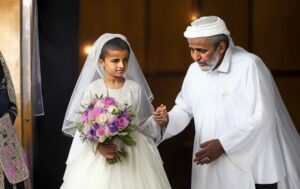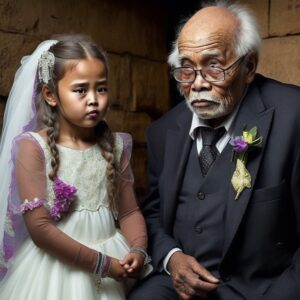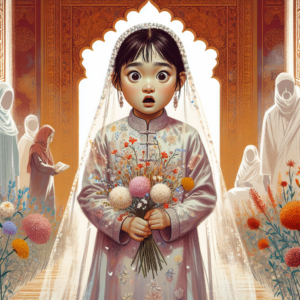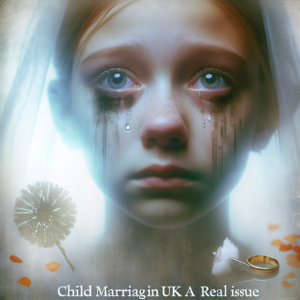Examining the Factors Contributing to Child Marriage
Introduction
Child marriage is a practice that still persists in many parts of the world, despite efforts to eradicate it. The United Nations defines child marriage as any marriage where one or both parties are under the age of 18. It is considered a violation of children’s rights and has severe consequences for the physical, emotional, and social well-being of those involved. Understanding the factors that contribute to child marriage is crucial in developing effective strategies to prevent and eliminate this harmful practice. This article explores the various factors that contribute to child marriage and provides insights into the causes and consequences of this phenomenon.
Factors Contributing to Child Marriage
1. Poverty and Economic Factors
Poverty and economic instability play a significant role in perpetuating child marriage. In many cultures, families facing financial hardships see child marriage as a means to alleviate their economic burden. Early marriage is often seen as a way to reduce the number of mouths to feed and secure economic benefits through dowries or bride prices. Families may also marry off their daughters at a young age to reduce the financial strain of raising them or to secure a better future for them, as they believe that marriage will provide economic stability and social protection.
2. Gender Inequality and Discrimination
Gender inequality and discrimination are key drivers of child marriage. Societies that devalue girls and women, limit their access to education and economic opportunities, and restrict their role to that of a wife and mother are more likely to practice child marriage. In such contexts, girls’ value is primarily determined by their marital status, and their education and aspirations are secondary. Discriminatory norms that prioritize male education and economic prospects contribute to perpetuating this harmful practice.
3. Traditional and Cultural Practices
Traditional and cultural practices deeply rooted in societies also contribute to child marriage. Customary and religious beliefs, such as preserving family honor, protecting girls’ virginity, or reinforcing patriarchal power dynamics, can lead to early marriages. Practices like child betrothal, where children are engaged before they reach puberty, pave the way for child marriage. These cultural norms perpetuate child marriage as a rite of passage, often disregarding the potential negative impact on the physical and psychological well-being of the child.
4. Lack of Education and Awareness
A lack of education and awareness about the consequences of child marriage is another contributing factor. Families and communities with limited access to education may not fully comprehend the long-term implications of marrying their children off at an early age. Ignorance about child rights, sexual and reproductive health, and the importance of education contributes to the continuation of this harmful practice. Educating communities and raising awareness about the negative consequences of child marriage is crucial in breaking the cycle.
5. Conflict and Humanitarian Crises
Conflict and humanitarian crises increase the vulnerability of girls and exacerbate the practice of child marriage. During times of crisis, families often resort to early marriage as a coping mechanism. They may believe that marrying off their daughters will protect them from the risks and dangers associated with disruptions in society and provide financial stability and protection. The lack of security and economic opportunities, coupled with weakened child protection mechanisms, make girls even more susceptible to child marriage in these situations.
FAQs
1. What are the consequences of child marriage?
Child marriage has severe consequences on the physical, emotional, and social well-being of children. These include increased risk of maternal mortality and morbidity, limited educational opportunities, poverty, domestic violence, and reduced economic prospects. Child brides are also more likely to experience psychological distress and suffer from mental health issues.
2. Does child marriage only affect girls?
While child marriage predominantly affects girls, boys can also become victims of this practice. However, girls are disproportionately affected due to deep-rooted gender inequalities and discrimination.
3. What efforts are being made to eliminate child marriage?
Numerous organizations, governments, and international bodies are working towards eliminating child marriage. These efforts include legal reforms, awareness campaigns, investing in girls’ education, economic empowerment programs, and community engagement initiatives. Sustainable development goals set by the United Nations aim to eliminate child marriage by 2030.
4. How can I contribute to ending child marriage?
Individuals can contribute to ending child marriage by advocating for policy changes, supporting organizations working to empower girls and combat child marriage, and raising awareness about the issue. Engaging in discussions, supporting education initiatives, and challenging discriminatory norms are crucial steps in this fight.
Conclusion
Examining the factors contributing to child marriage reveals the complexity of this pervasive issue. Overcoming child marriage requires addressing poverty, inequality, deeply-rooted traditions, and cultural practices. It demands a holistic approach that includes empowering girls, providing education opportunities, raising awareness, and advocating for policy changes. By understanding the factors that contribute to child marriage, we can work together to create a world where every child is given the opportunity to grow and thrive free from the shackles of early marriage.















